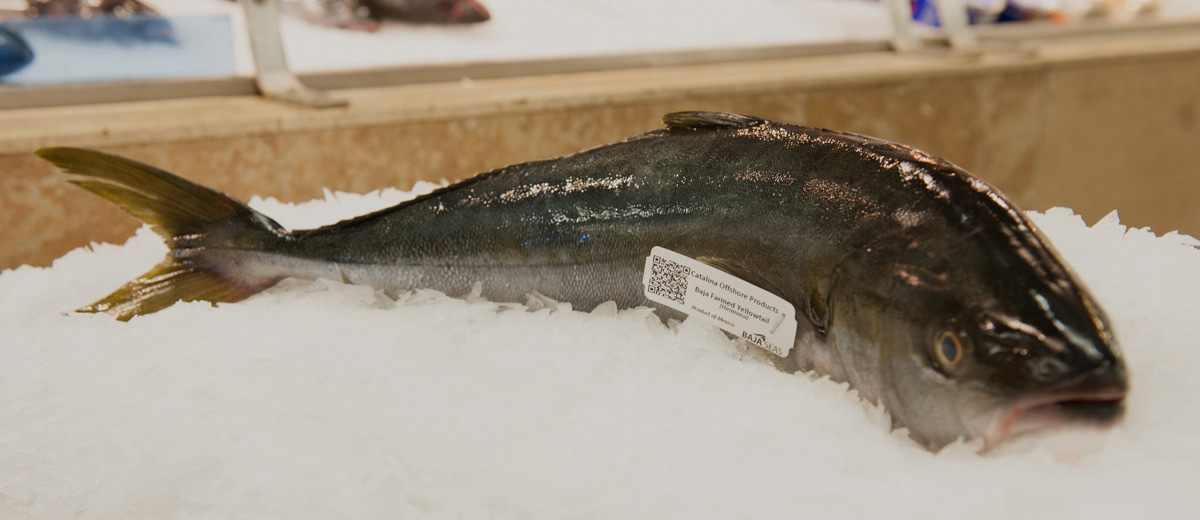In early 2014, Baja Hiramasa debuted in the marketplace. The firm, buttery texture and bright, mild flavor of this Baja farmed yellowtail (Seriola lalandi) is similar to Hawaiian Kampachi (Seriola rivoliana), and provides a slightly less fatty alternative to its Japanese cousin, Hamachi (Seriola quniqueradita).

Culinary applications
Thin to medium fillets with nice fat content make Baja Hiramasa ideal for small plate presentations, particularly sushi, sashimi and crudo. When cooked, the pearl pink flesh of this fish turns white, tender and flaky. For best results in cooking, pan sear or broil.
“It’s really impressive what Baja Seas has done with this yellowtail. Its cultivation has resulted in an exquisite fish produced in Mexico, with the quality and freshness that high Japanese cuisine and the international market demands.”
–Javier Plascencia, award-winning Chef and owner of multiple restaurants in Baja California and Southern California
Sustainable Aquaculture
Baja Hiramasa are harvested by Baja Seas, the first complete cycle yellowtail farm in the Americas. With consumers demanding more seafood and pressures on wild harvests increasing, Baja Seas believes aquaculture is the one true sustainable model. Its state-of-the-art grow out facility is situated on Magdalena Bay, a crystalline body of water off Baja California known for its marine life diversity and perfect conditions for yellowtail. Its additional 26,909-square-foot hatchery, Ocean Baja Labs, is located north of Magdalena Bay, just south Ensenada.
The original stock of Baja Hiramasa was bred for Baja Seas from fingerlings produced at Hubbs-SeaWorld Research Institute – renowned for developing methods of raising high-value marine fin fish species. The fingerlings were transferred to Baja Seas’ ocean pens, thus launching the facility’s first grow-out cycle. Future seed will be sourced from its own hatchery. At full capacity, the hatchery will be able to produce 2 million Baja yellowtail fingerlings per year.
Environmental Responsibility
Baja Seas’ entire production is underscored by responsible technology and strict biosecurity controls including:
- Geographical locations ensure low carbon transport footprint
- Recirculating Aquaculture Systems (RAS) diminish pollution and disease in waters
- Semi-automated feeders and feed cameras prevent overfeeding
- Sustainable fish feed derived from protein- and omega-rich sardines in a low Fish In-Fish Out (FIFO) ratio
- No use of antibiotics, hormones, paraciticides
[pro_ad_display_adzone id=”925″]


